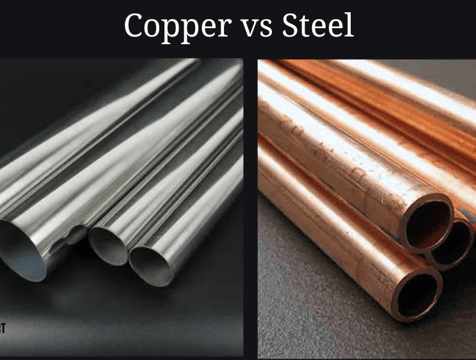Stainless Steel vs. Copper: Choosing the Best Material for Your Gas Pipeline
When installing a gas pipeline in your home, the choice of material plays a crucial role in ensuring durability, safety, and cost-effectiveness. Stainless steel and copper are two popular options, each with its own advantages and limitations. Here's a comprehensive comparison to help you make an informed decision
11/21/20242 min read


1. Durability
Stainless Steel:
Highly resistant to corrosion, even in humid or coastal environments.
Durable and long-lasting, making it a reliable choice for indoor and outdoor installations.
Resistant to corrosion but prone to oxidation over time, which may lead to discoloration.
Performs well in non-acidic environments but may degrade in areas with high sulfur content.
2. Flexibility and Installation
Stainless Steel:
More rigid than copper, which can make installation slightly challenging.
Requires specialized tools and expertise for bending and joining.
Copper:
Extremely malleable, allowing for easier bending and shaping during installation.
Quicker and simpler to install compared to stainless steel.
3. Heat and Pressure Resistance
Stainless Steel:
Can withstand higher temperatures and pressure, making it suitable for high-demand applications.
Maintains structural integrity even under extreme conditions.
Efficient at handling moderate temperatures and pressure but not ideal for extreme conditions.
Superior thermal conductivity aids in efficient gas flow regulation.
4. Cost
Stainless Steel:
Generally more expensive due to its robust properties and durability.
Higher initial investment but lower maintenance costs over time.
Typically more affordable upfront.
May require frequent maintenance or replacement, increasing long-term costs.
5. Environmental Impact
Stainless Steel:
Environmentally friendly as it is fully recyclable.
Has a lower carbon footprint during production compared to copper.
Copper:
Also recyclable but has a higher environmental impact due to the energy-intensive mining and refining processes.
6. Aesthetic Appeal
Stainless Steel:
Offers a modern and sleek appearance.
Ideal for areas where the pipeline is visible.
Copper:
Has a traditional and classic look.
May tarnish over time, requiring polishing to maintain its appearance.
7. Safety
Stainless Steel:
Resistant to punctures and external damage, ensuring better safety.
Less likely to develop leaks under pressure.
Copper:
Softer material, making it more susceptible to physical damage.
May require additional insulation to prevent accidental damage.
Which Material Should You Choose?
Choose Stainless Steel if:
You live in a humid, coastal, or high-demand environment.
You prioritize durability and long-term cost savings.
The pipeline will be exposed to potential physical damage.
Choose Copper if:
You need a cost-effective and easy-to-install option.
The pipeline will be installed in a dry and controlled environment.
Aesthetic appearance is a key consideration.
Ultimately, the best choice depends on your specific needs, budget, and installation environment. Consult with a professional gas pipeline installer to ensure you select the material that aligns with your requirements.
Contact US Today:
Email: info@vaultgaspipeline.site
Phone:
+91 8522 09 2525
+91 95155 92020


Quick Links:
Services
Our Process
Why Choose us
Contact us
Our Services:
Gas Pipeline Installation
Gas Pipeline Maintenance
